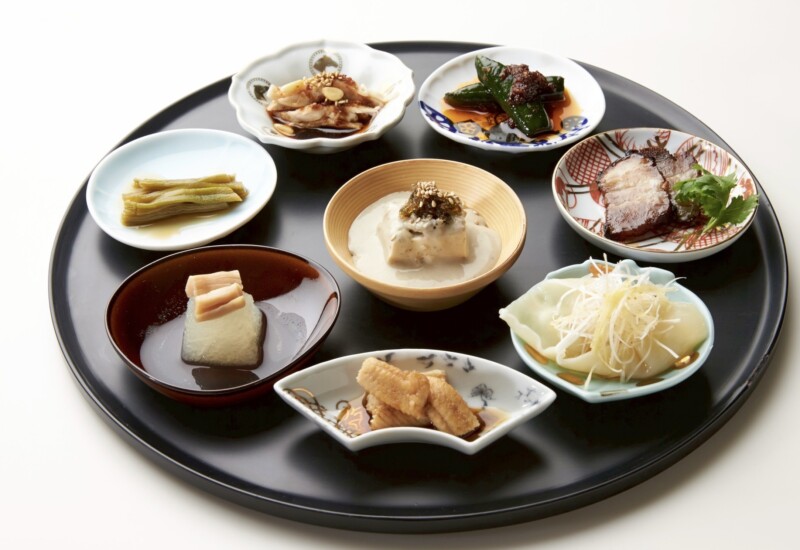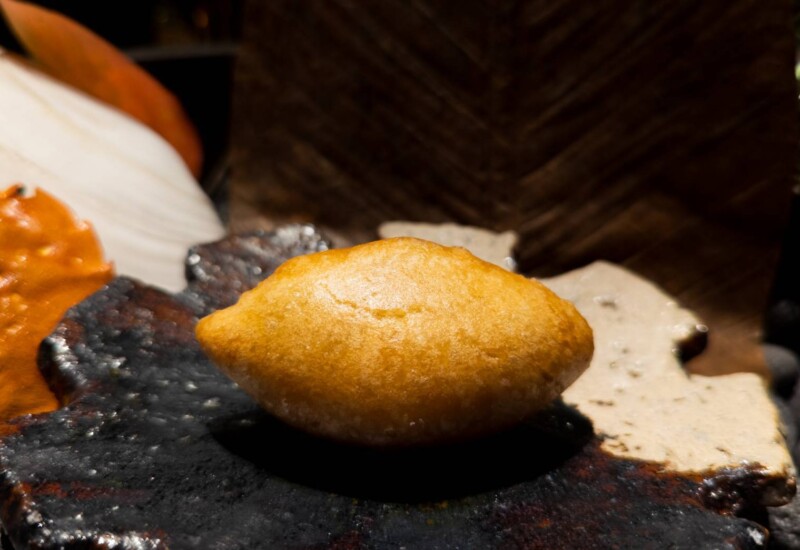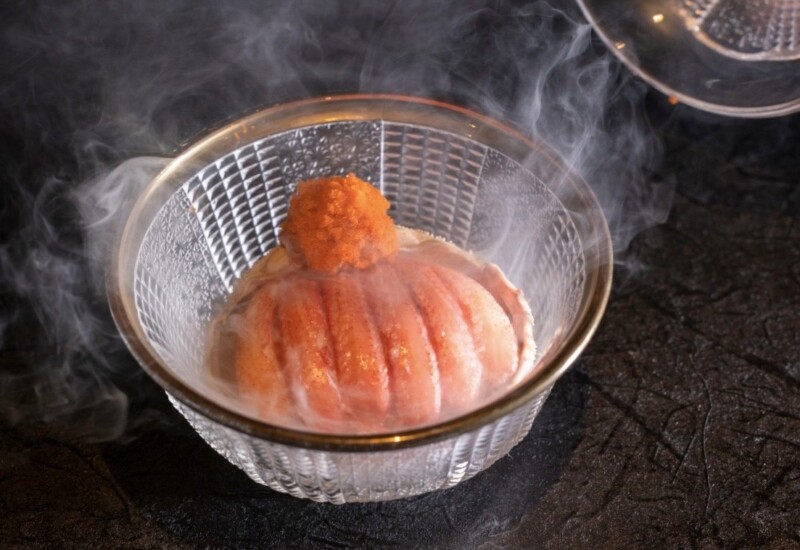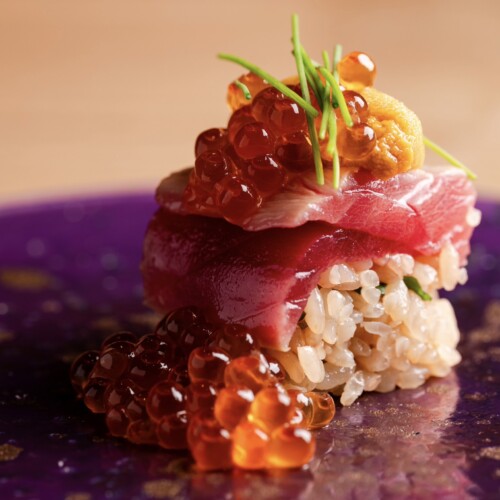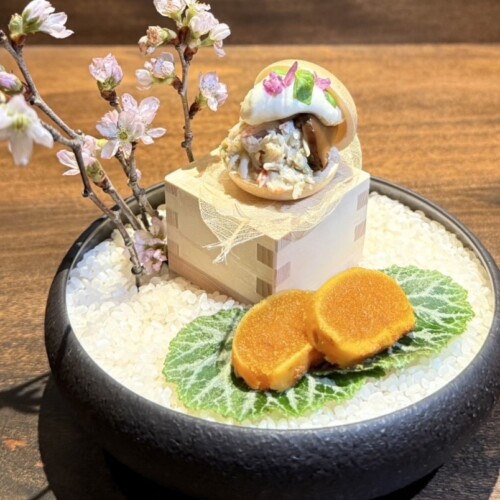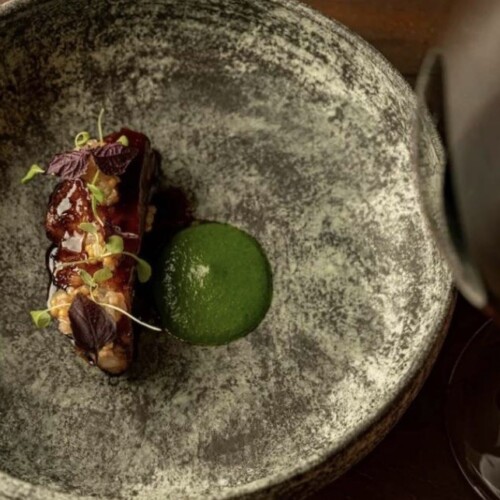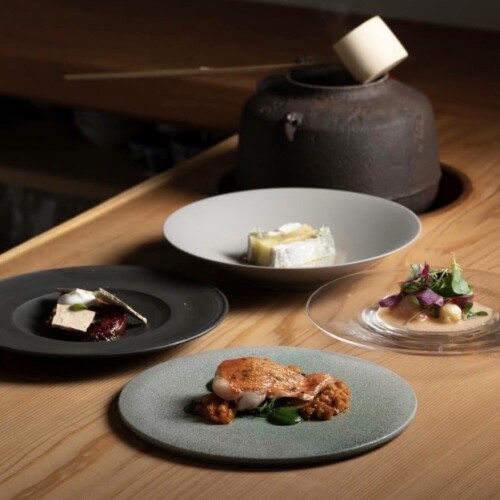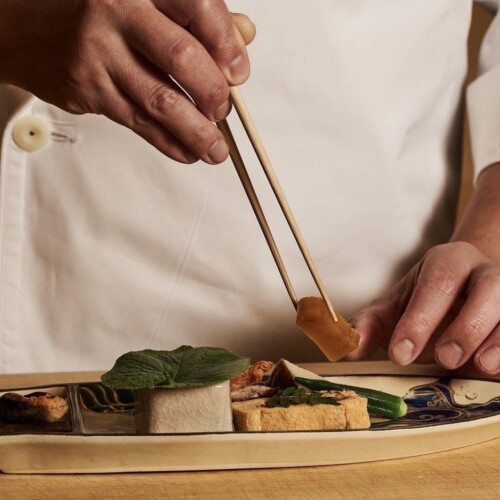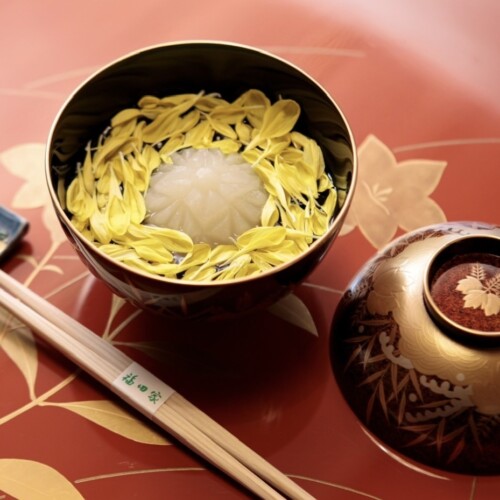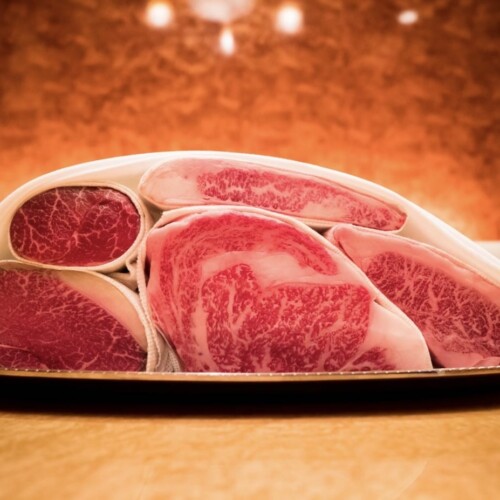水光庵 / Suikoan
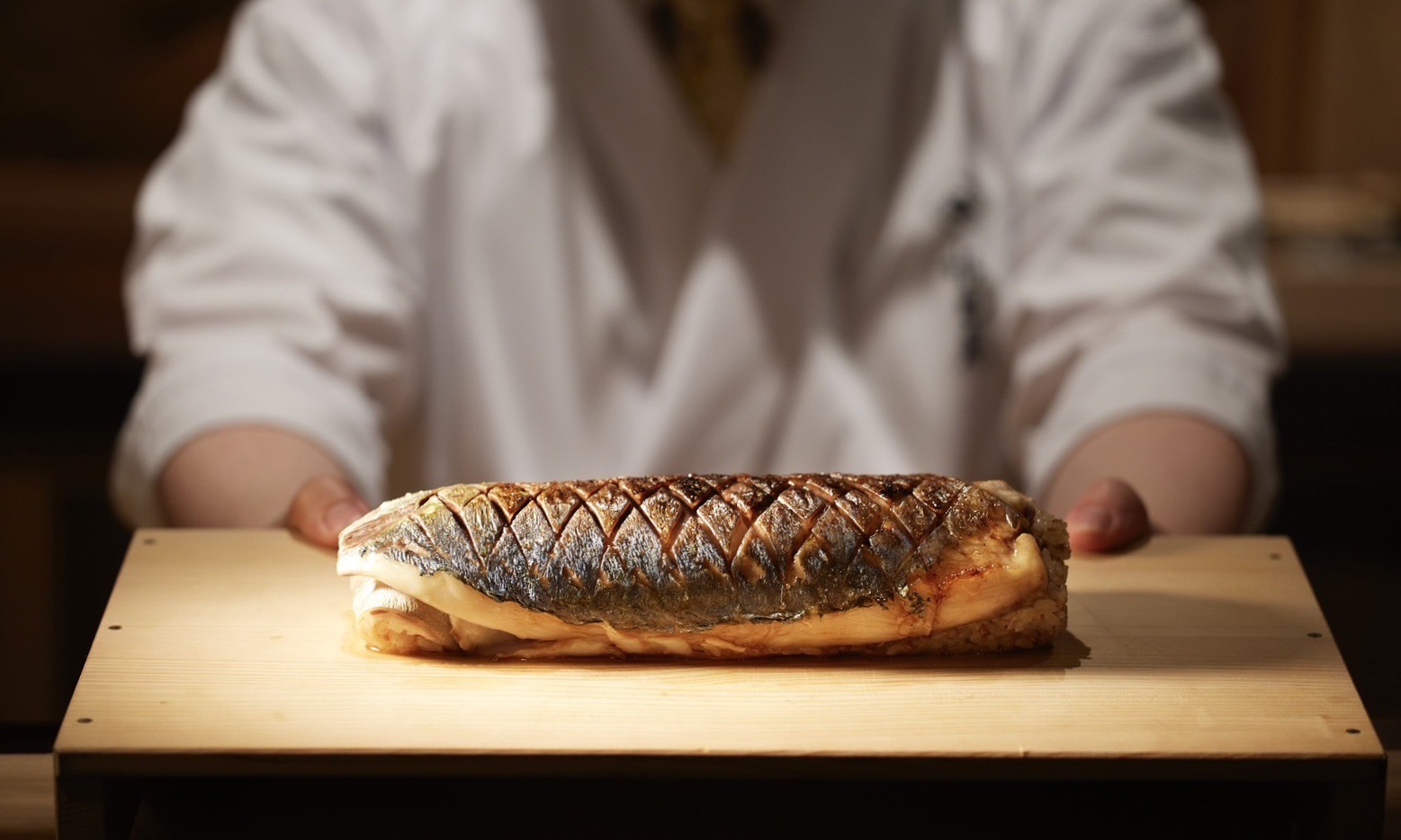
①Please introduce your restaurant.
My name is Tomohiro Ishida, the owner of Suikoan.
Inspired by a desire to study Japanese culture, I set my sights on becoming a chef in my teens and joined Kyoto Kitcho after high school.
I served as the sous-chef at Kitcho Arashiyama Main Branch from 2008 to 2014, and went independent in 2015.
I opened Suikoan in Mita, Tokyo, and relocated it to Higashi-Azabu in 2023 under the new name “Zenshi Suikoan.”
Suikoan is built around the concept of creating a space that enriches the soul, offering seasonal Japanese cuisine grounded in culture.
As a calligrapher, I go by the name Wakamizu. I study the Omotesenke school of tea and hold the tea name Soyu.
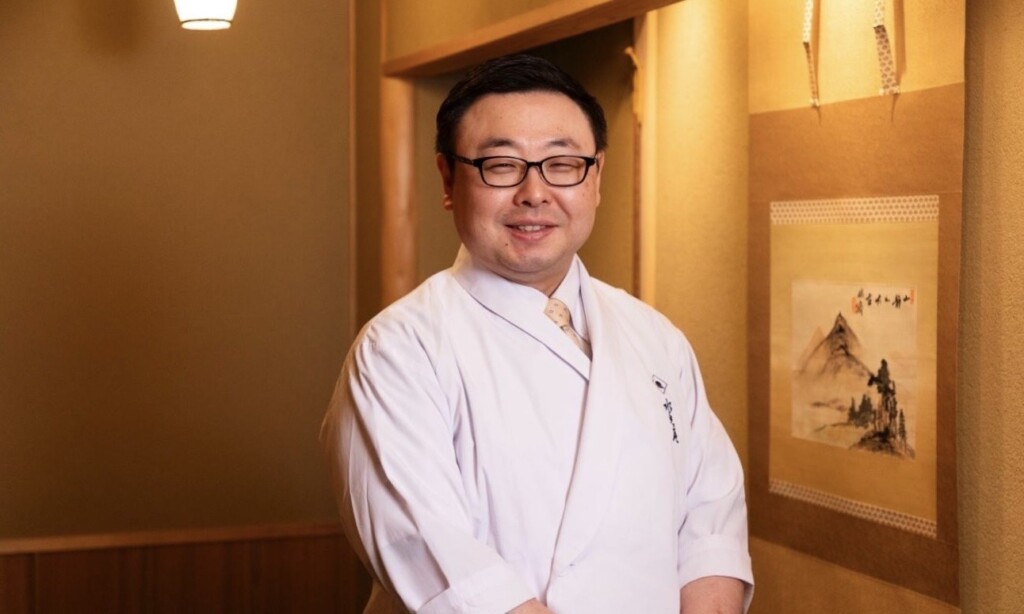
②What values or principles are most important to you as a restaurant?
We are committed to defining “Nihon Ryori” (Japanese cuisine) as a distinct genre, setting it apart from general washoku and kappo styles.
Beyond that, we strive to engage with our guests through refined, culturally informed communication, embodying the spirit of ichigo ichie—a once-in-a-lifetime encounter.
At Suikoan, we follow five core principles of Japanese cuisine.
①Concept: Dishes reflect seasonal events and are paired with vessels selected to match their aesthetic.
②Ingredients: We use only ingredients in season and never include those out of season.
③Form: Our hospitality values fleeting elements like fresh flowers, incense, water-sprinkling, and moistened chopsticks—expressions of impermanence.
④Style: A traditional Japanese setting with tatami, tokonoma, tea rooms, machiai, and shoji.
⑤Spirit of Tea: We conclude the meal with traditional sweets and matcha.
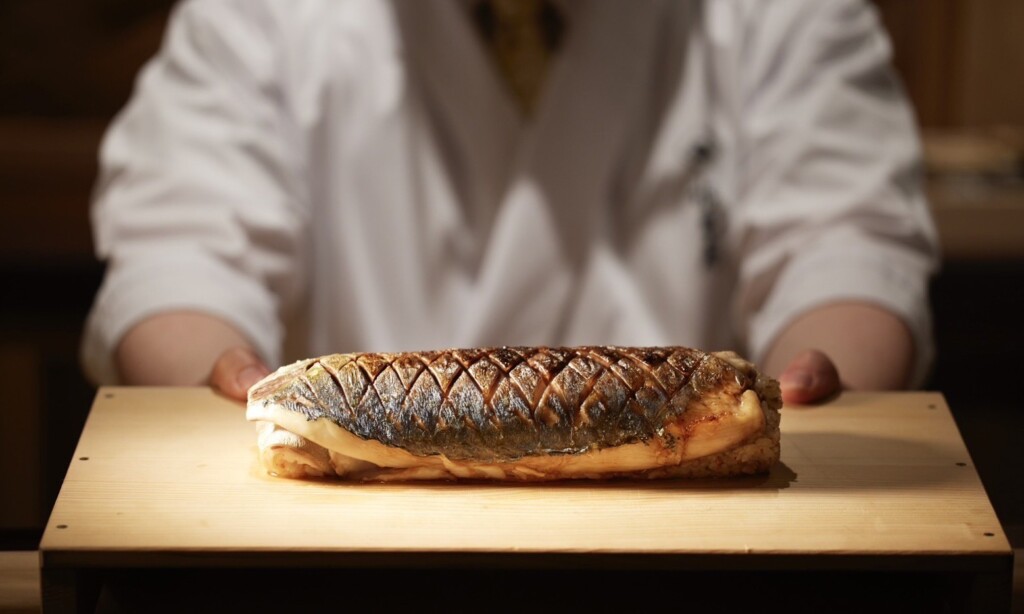
③ How do you select your ingredients, and what do you prioritize when sourcing them?
We source peak seasonal ingredients from across Japan, purchasing not only through markets but also directly from producers.
Each course is designed around a featured seasonal ingredient.
(Spring: bamboo shoots; Summer: pike conger and sweetfish; Autumn: matsutake mushrooms; Winter: crab)
We are also firmly committed to avoiding ingredients that fall outside their natural season.
(For example, we never use summer vegetables like cucumbers or tomatoes in winter.)

④ What makes your restaurant unique compared to others?
Having studied the tea ceremony for many years, I’ve built Suikoan around the worldview of chanoyu. This influences everything—from our interior design and course structure to the flow of the dishes and seasonal tea gatherings.
I also personally teach tea, calligraphy, and ikebana, and train our staff in these disciplines—something truly unique to our restaurant.
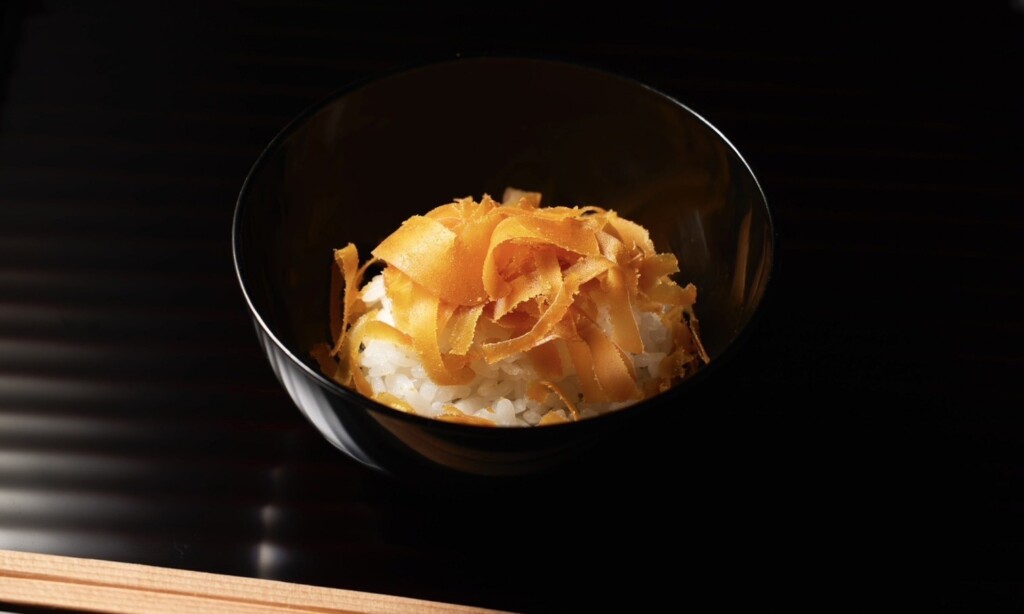
⑤Do you have any particular approach or philosophy when it comes to plating and presentation?
We select and plate dishes based on the formal aesthetics of both ingredients and vessels, following the Shin–Gyo–So principle (formal–semi-formal–casual).
For instance, dishes tied to seasonal festivals are plated in a formal style (Shin), while those featuring natural or seasonal ingredients take on a more casual style (So).
We carefully balance the color, shape, spacing, and harmony between the ingredients and the vessels when plating.
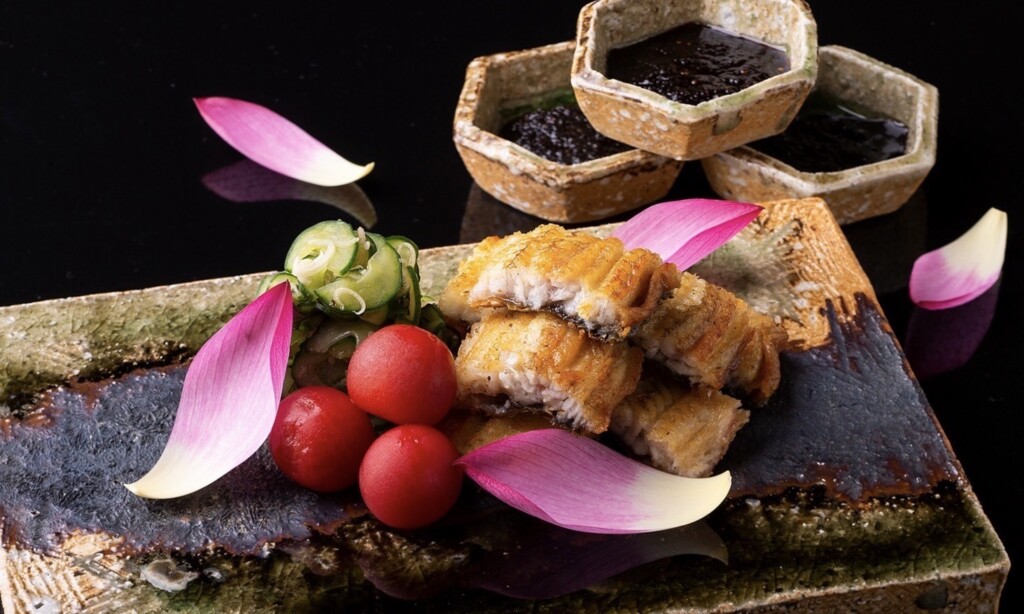
⑥ How do you curate your selection of alcoholic beverages?
We collaborate directly with breweries to craft exclusive sake made just for Suikoan.
We also offer a well-curated selection of highly regarded labels such as Aramasa, Kubota, Hiroki, Jikon, and Isojiman.
Our wine list centers on selections from the Burgundy region of France.
We also offer a variety of house-made soft drinks.
Our goal is to provide a thoughtful, versatile selection to suit every guest’s preferences.
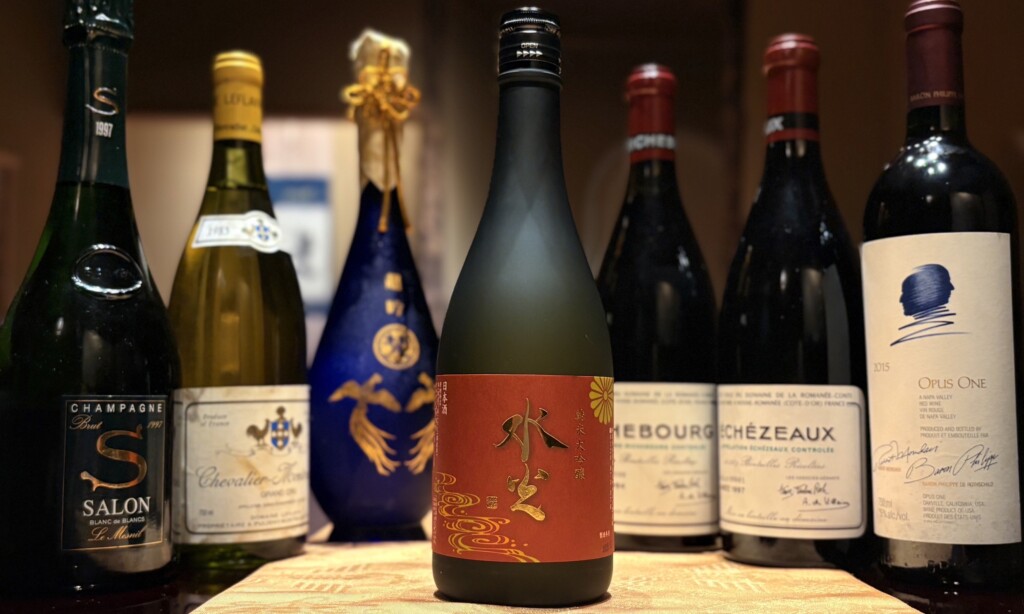
⑦ Can you tell us about your attention to interior design, tableware, and the overall dining atmosphere?
Our design is rooted in the chanoyu concept of “a mountain retreat within the city,” reflected in a sukiya-style interior that draws inspiration from traditional tea rooms.
As a restaurant, we’ve also designed our counter seating to highlight the live energy and rhythm of the kitchen, bringing guests closer to the culinary experience.
When it comes to tableware, our principle is to “dissolve the boundary between past and present,” curating pieces across eras and styles, including works by modern artisans.
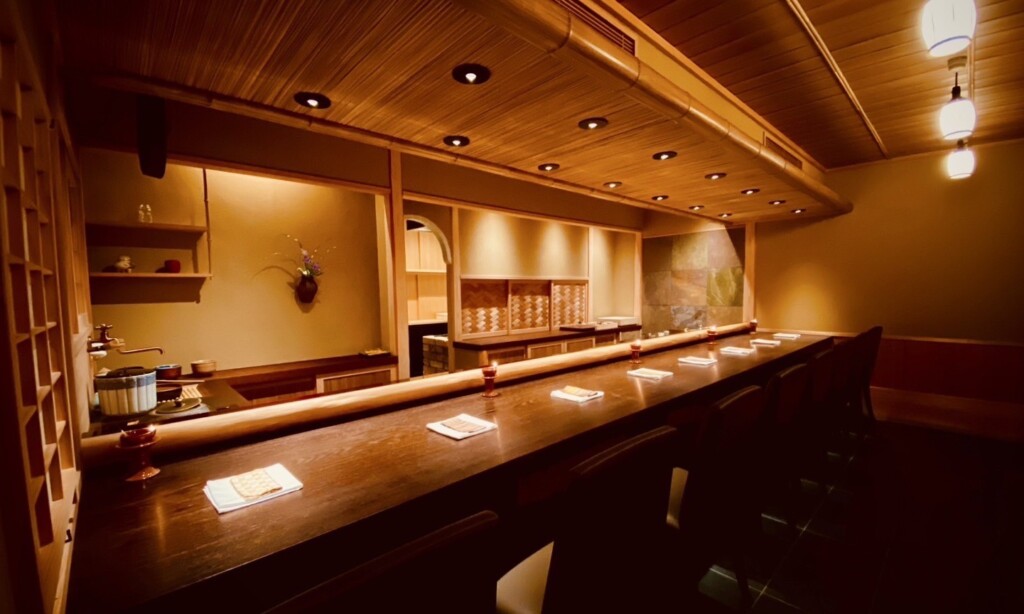
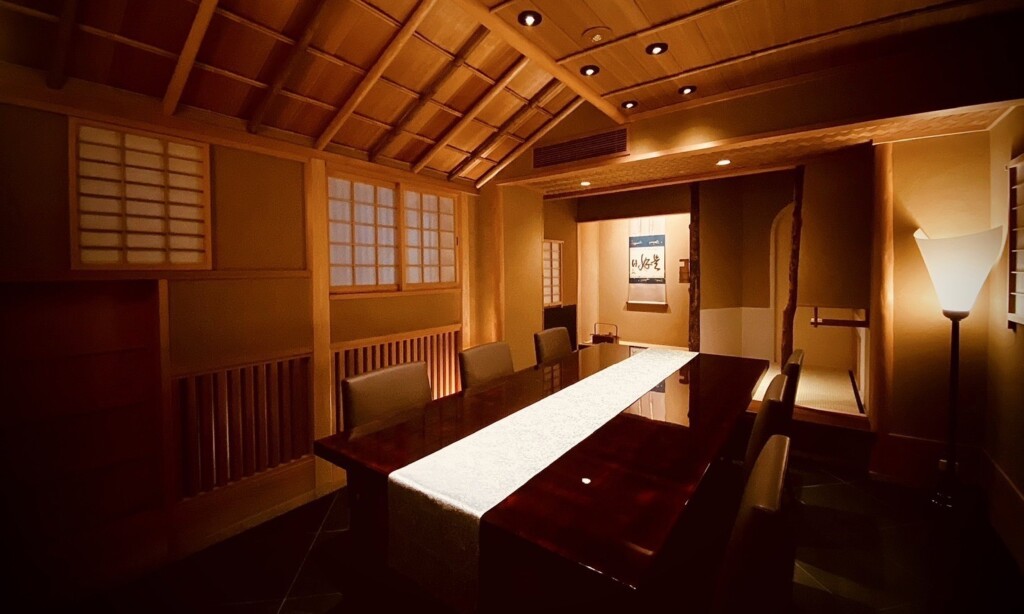
This is an Edo Kiriko cut glass, designed for serving sake.
It was custom-made by a craftsman named Mr. Horiguchi, exclusively for Suikoan.
This blue glass is one of a kind—it exists nowhere else in the world but here.
It is engraved with Suikoan’s family crest.
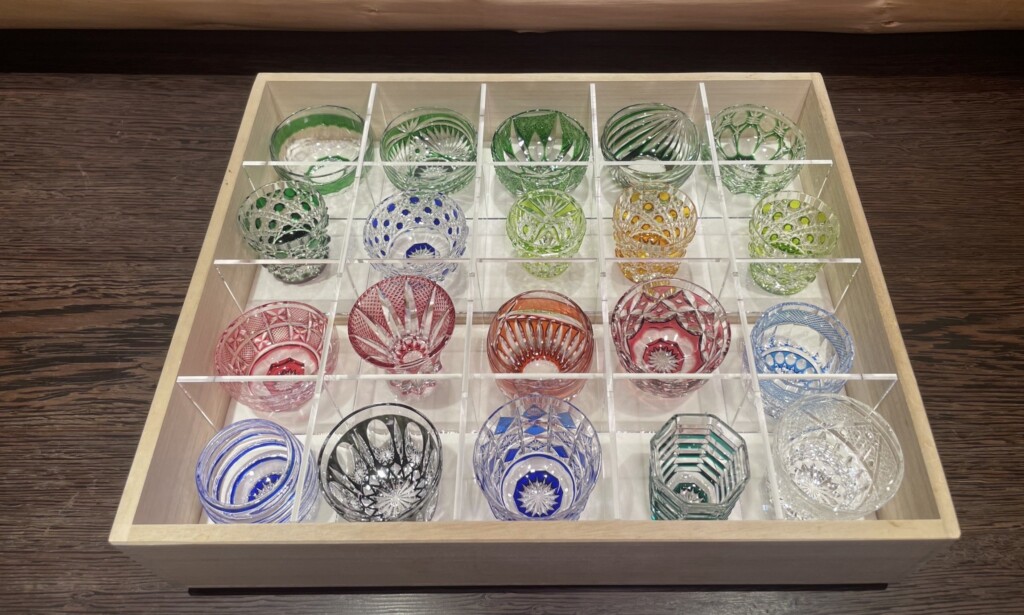
This piece is by artists from both past and present, from Japan and abroad.
Our collection includes antiques as well as original works.
We intentionally select a wide range of styles to avoid leaning too heavily toward any particular genre.
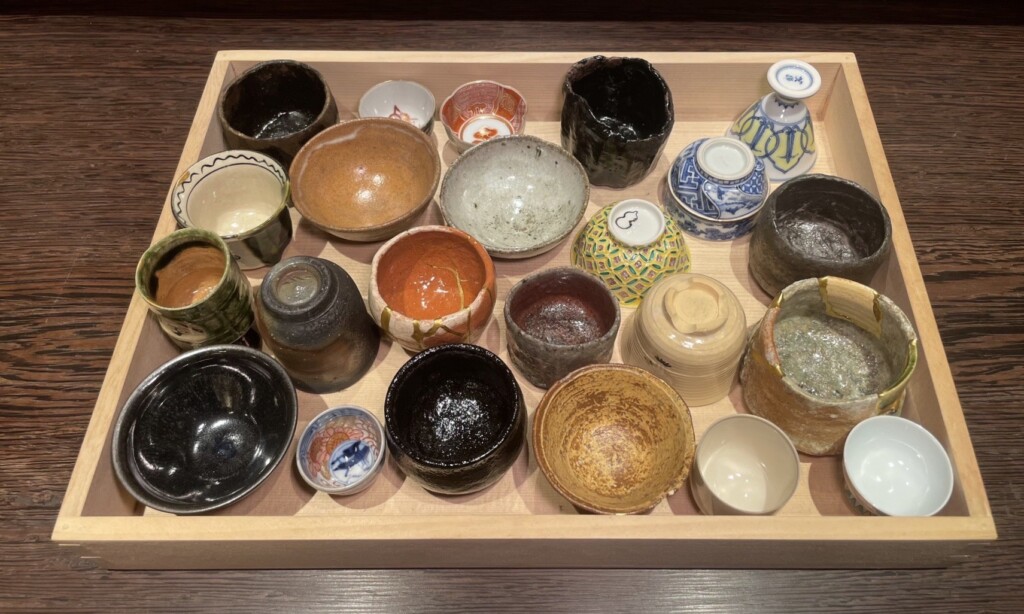
This is a matcha tea bowl.
It was crafted by Sadamitsu Sugimoto, a ceramic artist specializing in Shigaraki ware.
The piece was inspired by the style of Hon’ami Kōetsu, a renowned artist from the Edo period.
Its design features a gray base and a white upper portion, modeled after a famous bowl known as “Fuji-yama.”
It’s an exceptionally well-crafted and thoughtful piece.

⑧ What inspired you to become a chef?
I originally intended to go to university and attended an academic high school. But over time, I came to believe that no matter how educated or successful one becomes, lacking an understanding of your own culture, arts, and heritage is a deeper form of shame.
That conviction led me to pursue the comprehensive art forms of Japanese cuisine and the tea ceremony as a way to truly learn and embody my culture.
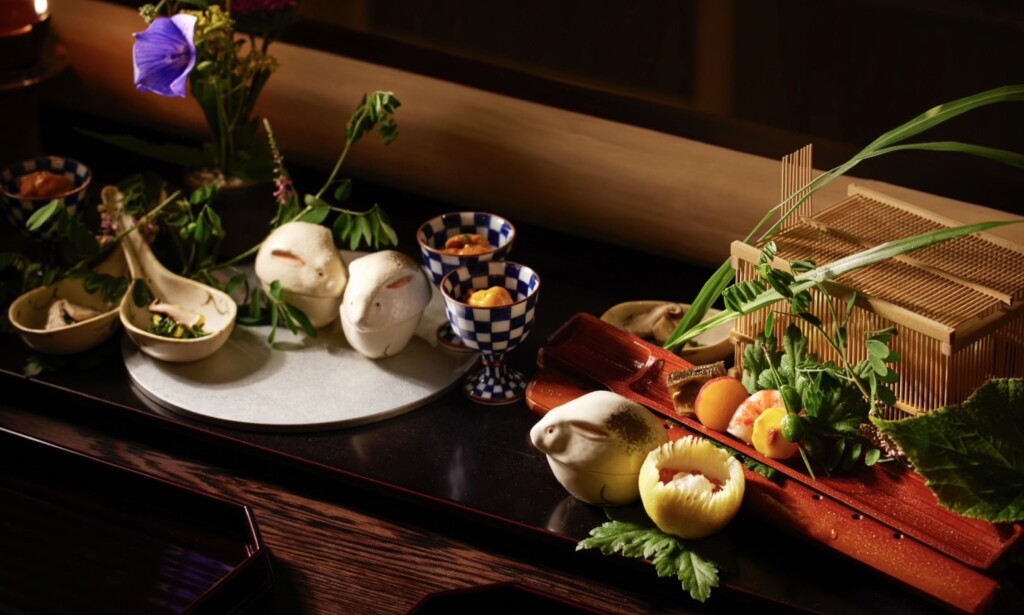
⑨ What kind of guests would you like to welcome?
First, those who are simply seeking exceptional food.
Second, those who believe that creating great food should not come at the cost of values, respect, or atmosphere.
And third, guests who bring both dignity and cultural refinement, and who value mutual respect between themselves and the restaurant.
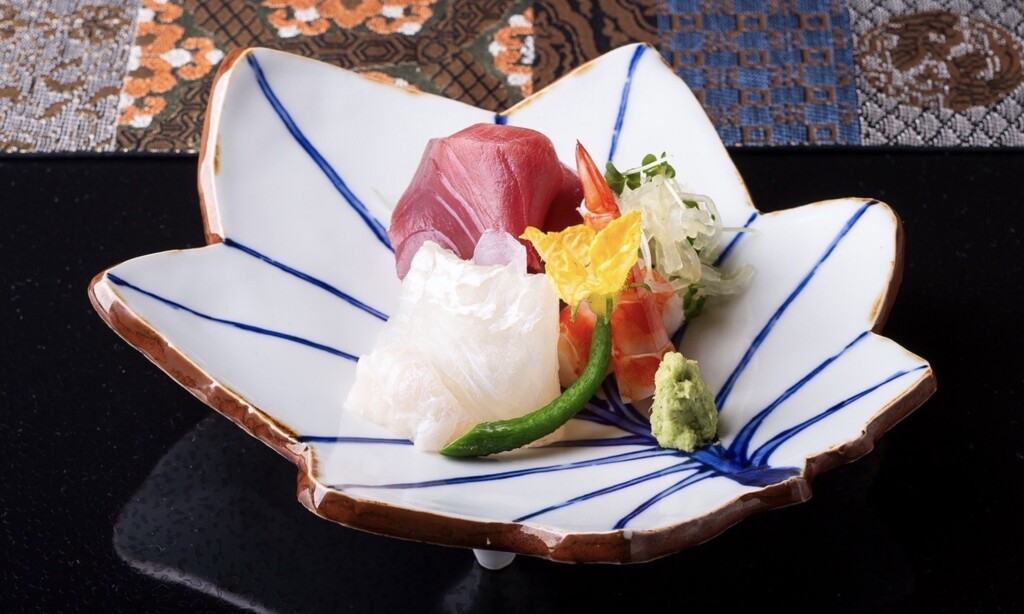
⑩ Are there any rules or things that are not allowed in your restaurant?
We kindly ask that guests refrain from any behavior that lacks decorum and may disturb the experience of others.
• Loud or disruptive conversations
• Strong or overpowering perfume
• Condescending or aggressive behavior toward staff
• Damage to the interior or furnishings
Such actions are strictly prohibited at Suikoan.
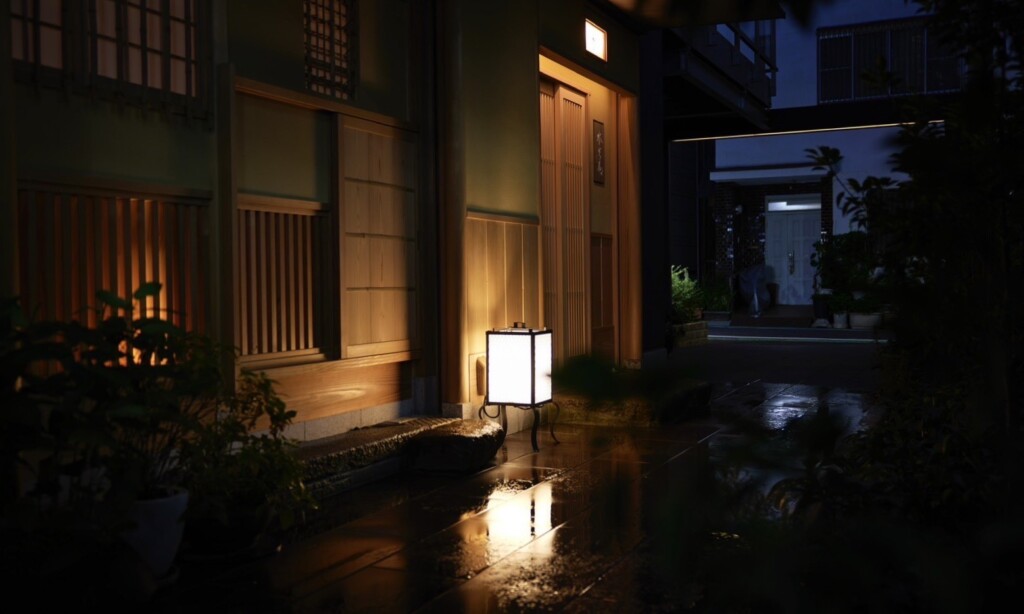
⑪Do you have a message you'd like to share with your guests?
First and foremost, we are a restaurant. We want you to enjoy delicious food and spend a rich, fulfilling time in our space.
As an independent restaurant, we are constantly refining our craft to offer experiences that cannot be found elsewhere. We wholeheartedly aim to earn your recognition as one of Japan’s truly exceptional dining destinations.


